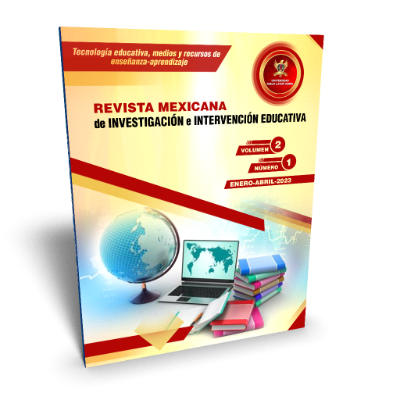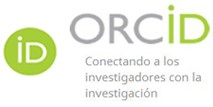Transposición didáctica en el Museo de Ciencia y Naturaleza para alumnos de cuarto grado del Distrito Escolar de Gadsden y Las Cruces en Nuevo México
DOI:
https://doi.org/10.62697/rmiie.v2i1.33Keywords:
Transposición didáctica, educación no formal,, exhibiciónAbstract
El presente reporte de investigación pretende mediante el concepto de transposición didáctica en contextos de aprendizaje informal como el Museo de Ciencia. Buscar de manera integrada a los contenidos escolares, desarrollar la formación científica de los estudiantes de 4° grado de primaria ubicados de los Distritos Escolares de Gadsden y Las Cruces en Nuevo México. Diseñado como un proyecto de investigación-acción, con la participación de 12 docentes de 4° grado de los mencionados Distritos; incluye tres actividades que se implementaron en el museo. El objetivo que se pretende con este trabajo es encontrar la utilidad y eficacia de las actividades en el museo que sirvan de apoyo a los contenidos escolares.
Palabras clave:
Transposición didáctica, educación no formal, exhibición.
ABSTRACT
This research report intends through the concept of didactic transposition in informal learning contexts such as the Science Museum. Search in an integrated way to the school contents, develop the scientific formation of the 4th grade students located in the Gadsden and Las Cruces School Districts in New Mexico. Designed as an action-research project, with the participation of 12 4th grade teachers from the aforementioned Districts; includes three activities that were implemented in the museum. The aim of this work is to find the usefulness and effectiveness of museum activities that support school content.
Keywords:
Didactic transposition, non-formal education, exhibition.
Downloads
References
Chevallard, Y. (2007). Readjusting didactics to a changing epistemology. European Educational Research Journal, 6(2), 131-134.
Dewey, J. (1938). Experience and Education. Collier Books, Macmillan Publishing Company.
Eshach, H. (2006). Bridging in-School and out-of-School Learning: Formal, non-Formal and Informal”. Education. Journal of Science Education and Technology, 16(2),171-190.
Falk, J. H. (1997). Testing a museum exhibition design assumption: Effect of explicit labeling of exhibit cluster on visitor concept developmen”. Science Education, 81(6), 679-687.
Feher, E., Rennie, L., Dierking, L., & Falk, J. (2003). Towards an agenda for advancing research on science learning in out-of-school settings. Journal of Research in Science Teaching, 40(2), 112-120.
Günay, B. (2012). Museum Concept from Past to Present and Importance of Museums as Centers of Art Education. International Conference on New Horizons in education INTE2012. Procedia Social and Behavioral Sciences 55, 1250-1258.
Hoyos, C. (2000). Un modelo para la investigación documental: Guía teórico-práctica sobre construcciones de los Estados del Arte. Señal Editorial.
Johnson, A. (2001). A Short Guide to Action Research. Pearson.
Lebrún, A. M. (2018). La educación formal, no formal e informal: una tarea pendiente en los museos del Perú. Unife Consensus, 20(2), 25-40.
Lobato, A. (2008). La Investigación Acción en Educación. Ministerio de Cultura y Educación.
Morentin, M., & Guisasola, J. (2014). La visita a un museo de ciencias en la formación inicial del profesorado de Educación Primaria. Revista Eureka sobre Enseñanza y Divulgación de las Ciencias, 11(3), 364-380.
Pine, G. J. (2009). Teacher Action Research: Building Knowledge Democracies. Sage Publishing.
Ruiz, J. (2006). Historia y museología de la educación. Despegue y reconversión de los museos pedagógico. Historia de la Educación, (25), 271-290.
Downloads
Published
How to Cite
Issue
Section
License
Copyright (c) 2023 David Morales-Andrade

This work is licensed under a Creative Commons Attribution-NonCommercial-ShareAlike 4.0 International License.
Authors who publish in Revista Mexicana de Investigación e Intervención Educativa (RMIIE), of Universidad Pablo Latapí Sarre agree to the following terms:
1. Copyright
Authors retain unrestricted copyright to their work. Authors grant the journal the right of first publication. To this end, they assign the journal non-exclusive exploitation rights (reproduction, distribution, public communication, and transformation). Authors may enter into additional agreements for the non-exclusive distribution of the version of the work published in the journal, provided that acknowledgment of its initial publication in this journal is given.
© The authors.
2. License
The articles are published in the journal under the Creative Commons Attribution-NonCommercial-ShareAlike 4.0 International License (CC BY-NC-SA 4.0). The terms can be found at: https://creativecommons.org/licenses/by-nc-sa/4.0/deed.en
This license allows:
- Sharing: Copying and redistributing the material in any medium or format.
- Adapting: Remixing, transforming, and building upon the material.
Under the following terms:
- Attribution: You must give appropriate credit, provide a link to the license, and indicate if any changes were made. You may do this in any reasonable manner, but not in any way that suggests the licensor endorses or sponsors your use.
- NonCommercial: You may not use the material for commercial purposes.
- ShareAlike: If you remix, transform, or build upon the material, you must distribute your creation under the same license as the original work.
There are no additional restrictions. You may not apply legal terms or technological measures that legally restrict others from doing anything the license permits.












